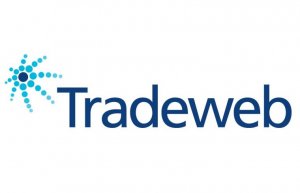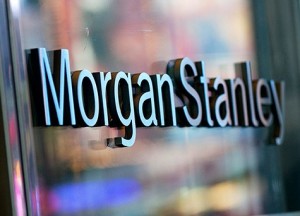It’s not just traders that face ponzi schemes, it’s brokers too: Watch out for the digital advertising frauds
The retail FX industry has, ever since the dawn of its existence, been reliant to a large extent on digital marketing and media buying, indeed so much so that the two industries are intrinsically related to each other. In the United States, in 2011, the average retail FX account size was $3,800, however the cost […]

The retail FX industry has, ever since the dawn of its existence, been reliant to a large extent on digital marketing and media buying, indeed so much so that the two industries are intrinsically related to each other.
In the United States, in 2011, the average retail FX account size was $3,800, however the cost of acquiring a client at that time was approximately $500, including all components required to acquire clients – remuneration of sales team, marketing tools, digital media buying, and advertisement campaigns as well as the cost of paying commission or a revenue share to partners and running advertising campaigns.
Interestingly, according to research by Citigroup, the average retail FX account size across the world’s 4 million retail FX traders in 2015 was $6,600.
The status quo is now being challenged remarkably as the cost of acquisition has soared to approximately $1,000 to $1,200 per retail client, and customer lifetime value among MetaTrader 4 white label brokers is less than 6 months.
Even Plus500, which operates a very lean business with no sales team and has a very effective digital marketing strategy with low media buying costs in order to attract small-deposit customers on a low-touch basis, is experiencing customer acquisition costs of approximately $850 which is the lowest figure in the retail FX industry, yet still far in excess of that in other electronic retail businesses such as gaming.
As a result, other avenues that engage customers away from media buying and lead generation are being increasingly utilized, such as automated strategy selection, calls to action that are tailored to specific traders, and not to mention of course, the traditional introducing broker partnerships.
Digital marketing is still very much in vogue and an essential part of the industry, and in some cases, a revertion to that method alone has taken place, a case in point being FXCM’s scaling down of affiliates, and refocus on lead acquisition in global regions to provide services directly to clients.
Indeed iFOREX, a very quiet company in terms of public profile, generates $100 million per annum in revenues, almost all from digital marketing, and Plus500, which became a $1 billion company by early 2015, has no sales team at all an conducts all of its business via very well honed online media marketing.
Ponzi scheme rearing its head again
Facebook has become a very popular place within which to conduct digital marketing campaigns, despite its non-commerical, social media focus.
This has given rise to a somewhat unpleasant scenario, which is once again beginning to attract the attention of those with digital marketing experience, that being a service called Beonpush.
In the summer of last year, several milti-level marketing (MLM) sites reviewed Beonpush, which is frequently promoted by Facebook users and claims to offer individual investors a way into a potentially huge market for online advertising, boasting that investors could gain “daily interest” of between 0.5% and 3.5%, as well as income for referring others.
Interestingly, suspected ponzi schemes which have been orchestrated by vendors of trading software that requires vast investment by retail customers with promises of extremely high returns with no track record have been very quickly rooted out by regulators and law enforcers over recent years, however digital advertising companies attempting to effectively do the same – sell a ‘cure all’ software solution to a company and promise massive returns with no previous performance records – are not selling a financial product to retail users, therefore are not subject to regulatory censuring.
For this reason, Beonpush is, one year on, still in existence and the scheme has already attracted thousands of users globally and more than 90,000 people were discussing it on recently on Facebook alone.
Operated by CEO Ferki Demirovski, no British address is listed on the firm’s website, however an address in Luxembourg is listed, which, if searched, brings up a series of businesses listed under the same address.
Aside from Beonpush, which is still remarkably in business, another example of a digital marketing ponzi scheme is Banners Broker, which styled itself as an online advertising broker.
Banners Broker, operated by Chris Smith and Rajiv Dixit, collapsed and surrendered its assets in December 2014, having been widely heralded as a ‘sordid ponzi scheme.’
FinanceFeeds asked Bart Burggraaf, Managing Partner of MediaGroup Worldwide, an expert in digital and performance marketing for the financial services industry, who explained “If a broker finds the right agency partner, advertising can be bought at lower prices than they would be able to get themselves, plus that partner would potentially have competences not available to in house teams. But it can be tough to find the right partner, and some agencies charge a large fee for the privilege.”
“In addition, Brokers don’t necessarily benefit from learnings gotten by agencies in the same way they would inhouse. It’s a balancing act and all in all, with the right partner, I would say keep management in house, but outsource operations and input on strategy” said Mr. Burggraaf.
“With regards to a scheme like Beonpush, well, falling for such schemes just tells me those companies need to find trusted partners to manage their advertising even more so, as a competent marketing manager would not work with such companies, in my opinion” concluded Mr. Burggaaf.
In these days of schemes which are going unnoticed by regulators and lawmakers, companies that have large digital media buying departments should keep a keen eye out and ensure that if something looks too good to be true, then it probably is too good to be true.









